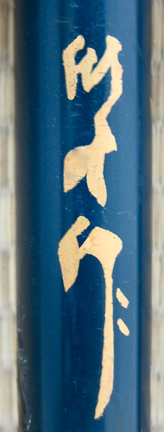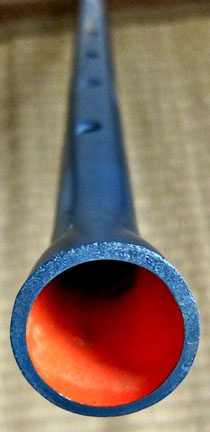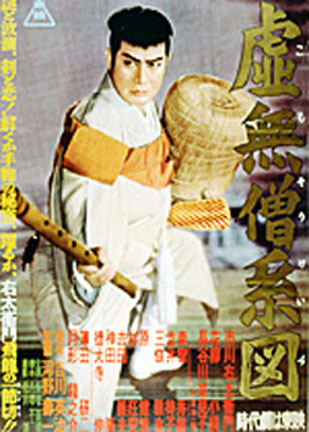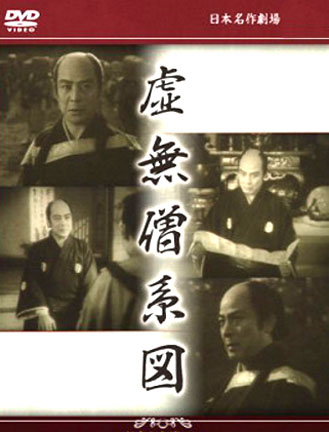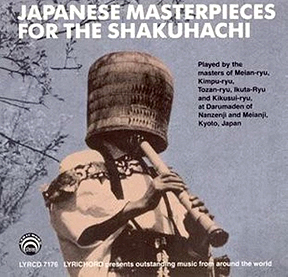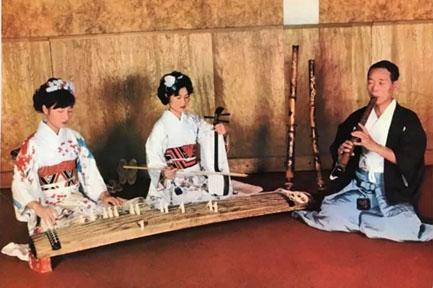
KIKUSUI KOFU (1907-1974), also known as Shibata Seizan, became a legend in his own day after a lifetime of teaching and playing shakuhachi in the Kyoto area. The founder of a school of traditional music which bears his name, Kikusui is noted for his innovative approach to shakuhachi making. He crafted chokan (long flutes) from oversized pawlonia branches with bamboo roots attached to their ends, and is credited with developing a nine-hole shakuhachi.
Similarly, he expanded the parameters of sankyoku music by substituting the shamisen with the Chinese yuequin, a circular-bodied string instrument also also called the "moon guitar". Kikusui made shakuhachi from plastic water pipe with flared bottom end to improve intonation. It is likely such inexpensive shakuhachi were made to support Kikiusui's efforts to introduce shakuhachi music instruction to the curriculum of the Japanese school system. Shortly after I began began making in 1970, a student of Kikusui paid a visit to my workshop, presenting me with a gift from his teacher to inspire my own flute making endeavors—a plastic shakuhachi inscribed with calligraphy of the kanji "Mu" (nothingness) and Kofu's signature.

